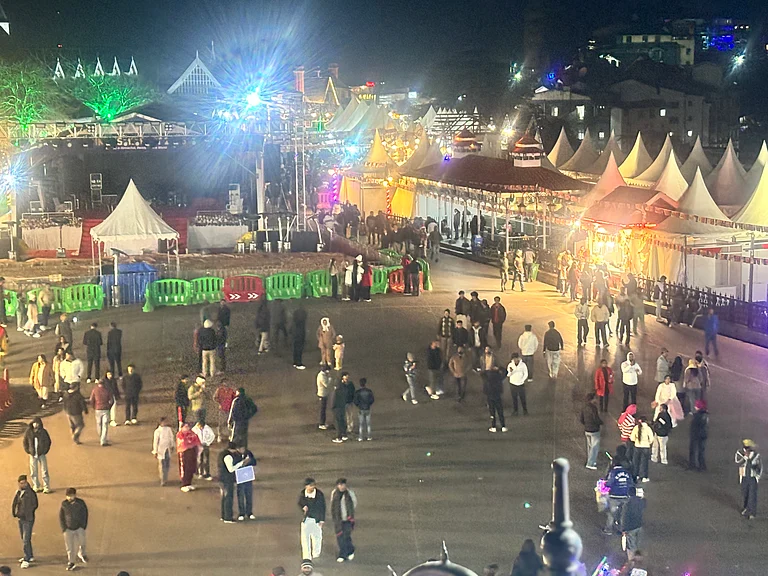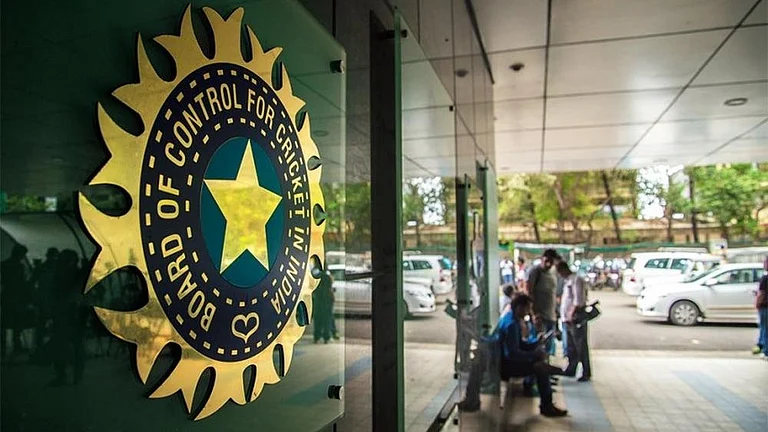The year 2017 was seminal for integrated mines-to-metals Indian entrepreneurs. It was then that two Indian businessmen executed two daring, ambitious, and audacious, global takeovers. Kumar Mangalam Birla’s Hindalco acquired the US-based Novelis for $6 billion, and emerged as a world’s leading integrated aluminium player. Ratan Tata’s Tata Steel was involved in a bigger takeover; it paid over $12 billion for Corus Steel.
Both the moves triggered a wave of global M&As by Indian miners. Vedanta Resources’ Anil Agarwal, Jindal Group, and Gautam Adani of Adani Enterprises willingly became major players in the ongoing international acquisition game. State-owned miners like Coal India, NALCO, and others got on to the bandwagon. In the mining and metals sector, these private and public sector groups emerged as the new Indian MNCs.
However, the spree faltered over the next few years. The reasons were several. In some cases, the Indian firms overpaid and over-borrowed. In others, geological and geopolitical conditions went against them. Local political environment and laws didn’t completely favour global strategies. The constraints on the public sector included pressures on them to fund domestic production, or finance the central budgetary deficits.
The cycle has now moved a full circle. Yet again, there is an urge and desire among Indian firms to look outwards. This time, apart from the overseas opportunities, a new factor has come into play. The Indian government has encouraged, even forced, the mining firms in a bid to enhance mining security which, in some cases, is related to national security. The former minister of mines, Piyush Goyal, spelt this out clearly when he got the mining portfolio in 2016. “We need security in terms of our requirement of minerals.”

Anil Jha, CMD, is leading Coal India on a global mining exploration
Experts contend that because of the government’s involvement, the next wave of global M&As will be driven by the public sector, and not the private firms. This is evident from the events in the past 12 months. Coal India decided to forget its earlier unsuccessful attempts, and re-scout for “reserves of coking coal and high-grade low-ash thermal coal in countries such as the US, Colombia, Canada, Australia, Indonesia, and South Africa”.
Last year, three state-owned enterprises (SOEs)—NALCO, Hindustan Copper, and Metal Exploration Corporation—formed a joint venture to acquire assets abroad. The purpose was to look for strategic minerals, including the rare ones, that are either not available in the country, or are not found in sufficient quantities. Two other SOEs, NMDC and Indian Rare Earths, inked a MoU to jointly “explore opportunities in rare earths in India and abroad”.

Hindustan Copper under CMD Santosh Sharma too is looking for assets abroad
Clearly, Indian SOEs, despite the past experiences, wish to emulate the strategies of their counterparts from other countries, especially China. In the past few years, SOEs were quite active in global M&As. Even government-backed sovereign funds purchased sizeable stakes. According to an Ernst & Young report, “Typically, SOEs from high-consuming nations such as China, Japan, and South Korea are tasked with securing minerals either through off-take or equity ownerships to supply national demand.”
While this is a laudable pursuit, Indian SOEs need to learn a few lessons. A recent report by PricewaterhouseCoopers warns, “Perhaps the most significant risk currently facing the world’s top miners is the temptation to acquire mineral-producing assets at any price in order to meet rising demand. In the previous cycle, many miners eschewed capital discipline in the pursuit of higher production levels, which set them up to suffer when the downturn came.” It adds, “They need to resist the urge to pursue projects or acquisitions at any price, and instead, focus on mining for profit, not for tonnes.”

The global successes of the Chinese SOEs have also led to a few myths about their outbound investments. For example, a report by McKinsey says that it is commonly believed that “somewhere in Beijing resides a collective brain that directs Chinese companies’ actions—and that the recent outbound acquisitions have been directed by this pervasive government planning”. While this is partly true, its impact is exaggerated.
In the case of China, the government only provides a generic “overall policy framework”. But apart from a few exceptions, “acquisitions are identified and pursued by management teams for commercial reasons”. In addition, the companies are directly responsible for pinpointing and executing the specific deals. The government acts as an active facilitator. As the McKinsey report explains, “Approvals arrive faster, loans are more readily available, and at times the government will quietly tell other Chinese bidders to drop out of auctions so that only one is contesting the deal.”
Indian SOEs and the Indian government need to be aware of the above facts. The latter shouldn’t force the former to buy specific assets, and at whatever prices. This is especially crucial because the government has inked several mining partnership pacts on a bilateral basis with several nations. These should not become the basis for the decisions of Indian SOEs, which should have the freedom to buy assets in non-MoU nations.

Kumar Mangalam Birla’s Hindalco is now a global player
Another myth is that the Chinese companies are backed by almost unlimited capital from the government and state-owned banks. In reality, the source of funding for most takeovers “is often not even Chinese”. The McKinsey report states, “Many of the deals with the very high leverages were financed enthusiastically by Western banks. The financing of many of the largest deals was done by foreign-led syndicates of banks.”
Hence, Indian SOEs should be careful not to spend from their own kitties, but arrange funds globally, and from varied sources. Today, according to the Ernst & Young report, there are a large number of non-traditional financiers, which include private equity investors. For example, private equity firms were active participants in several coal deals in Australia in 2017. Last year, Rio Tinto sold one of its Australian assets to an Indonesian consortium that included EMR Capital, a private equity firm with a resources focus.

Indian tycoon Ratan Tata paid $12 billion to acquire Corus Steel
Such joint acquisitions and consortium-based approach could prove to be more viable, attractive, and practical for the Indian SOEs. Apart from saving financial contributions, the group-based investments would enable the pooling of various other resources and skills, including management bandwidth. Consumers, producers, and pure-play investors could together prove to be better M&A players, rather than if they acted individually.
A third myth about the Chinese is that they are “crazy gamblers”, and pay huge premiums if their eyes are set on the targets. According to the McKinsey report, “For many sellers, having Chinese buyers participate in an auction can be a frustrating experience. Their decision-making often appears opaque and irrational, with limited visibility into their funding priorities, or intentions to actually complete a transaction.” Thus, the Chinese come across as speculators, who are willing to pay an extra billion dollar.

While this was partially true a decade ago, the scenario has changed. Chinese SOEs today rarely pay huge higher-than-market premiums. In fact, the “valuations paid were not significantly above the normal market levels”. According to the Ernst & Young report, most buyers, including the Chinese, “buy at a price that reflects shareholders’ best interest, which includes knowing when to walk away” from a specific deal.
Indian SOEs should walk into the international M&A arena with a similar mindset. If they need to be gamblers, they should like the professional ones, who know “when to hold, when to fold up, when to walk away, and when to run”. While they need to be aggressive in their pursuits, they should understand their financial and managerial limits. Or else, the Indian firms would end up chewing more than what they could digest.
Remember the Tata Steel-Corus Steel deal. Although it was a courageous move, it gave the Tata Group a “bloody nose”. As a business commentator put it, the deal was “a case study on how not to craft a global M&A strategy”. One of its biggest failures was Ratan Tata’s inability to realise “when to withdraw”. Wrote a commentator: “Participating in an auction is akin to a frog in boiling water. Since the price moves up only marginally, the impact is often hard to gauge and, before you know it, you end up getting scalded.” In the Corus case, Tata Steel increased the bid amount several times.

Gautam Adani has established himself as a major player
Finally, according to the McKinsey report, there is the “perception that Chinese companies aren’t particularly interested in integrating their acquisitions into the parent companies to the same degree that a US or European acquirers would want to”. While this was true years ago, the Chinese SOEs have learnt the benefits of having sound integration plans, and develop them quite earlier in the deal stage.
Through experiences, the Chinese realised that SOEs that “had an organised and systematic approach to integration, on average, showed much better results than those that kept the assets at arm’s length, managing through the board, and treating it essentially as a financial investment”. Today, there is a “sound logic” behind Chinese mining investments, and there is an increasing awareness about extracting potential synergies through M&As.
Both Indian SOEs and the Indian government need to realise that the integration plans are critical. All acquisitions should have a rationale. They could be either to acquire a global footprint (international integration), access raw materials supply (vertical integration), or for business diversification (lateral integration—from mining through to financing and trading). Without such a plan in place, “potential synergies are simply numbers on paper”.
However, what will be equally important for the Indian SOEs is to answer an ever-relevant question: Is this the right time to buy? Timing, not opportunities and pricing, proves to be the reason for either success or failure in many cases. For instance, Coal India had almost-finalised to buy 10% stake in the US-based Peabody Energy. It was nixed because of the government’s non-clarity on guidelines for overseas acquisitions by SOEs.

Anil Agarwal of Vedanta Resources is driving the modernisation of Indian mines
Last year, this world’s largest private sector coal miner filed for bankruptcy, with red marks all over its balance sheet. Peabody Energy may recover yet, as global coal prices have moved northwards, but a lingering doubt remains. If Coal India had bought a stake in the US firm, would that money have gone down the drain? Or would the partnership have helped Peabody Energy to find new and large markets in India and other countries?
It is proven beyond doubt that another reason for the failure of M&As is the inability to concretise cultural integration. Managements of both the acquirer and target, especially in cross-border deals, operate in different organisational, legal, regulatory, business, and cultural environments. Hence, the respective managers think in different ways. It is both an art and science to bring them together, and on the same page.

The Chinese learnt this the hard way. This was why they earlier left their targets alone; they treated them as investments, and not operational fits. Indian SOEs don’t need to re-invent this management wheel. They need to include cultural integration as a part of their overall plans. Hence, each deal needs to be analysed independently, and not pursued because of a chairman’s ego, a minister’s whim, or pressures from the government.
Whatever may be the pitfalls, obstacles, and dangers involved in global M&As, there is no shying away from them. The reason is that mining security is now tightly enmeshed with national, even defence, security. Over three years ago, suddenly the Chinese halted shipments of rare earth minerals, which are crucial for “everything from guided missiles and hybrid cars to flat-screen televisions and Blackberry phones”, to Japan.

Since China possessed one-third of the world’s known deposits of rare earth metals, and produced 97% of the annual production, the decision shocked governments and private buyers. This is especially true because the rare earths are difficult to substitute. China’s move spawned a two-pronged strategy across the globe. Nations vied to find new non-China deposits, and researchers worked hard to re-use such minerals.
Given this scenario, the Indian Rare Earths-NMDC partnership seems sound. The race to aggressively explore the minerals domestically needs to be coupled with one to seek overseas mining assets. Obviously, if other mining SOEs simultaneously succeed on both these fronts too, India will be able to link mining security with economic, national, and defence securities. This has to be the overriding vision of a looking outward strategy.


























